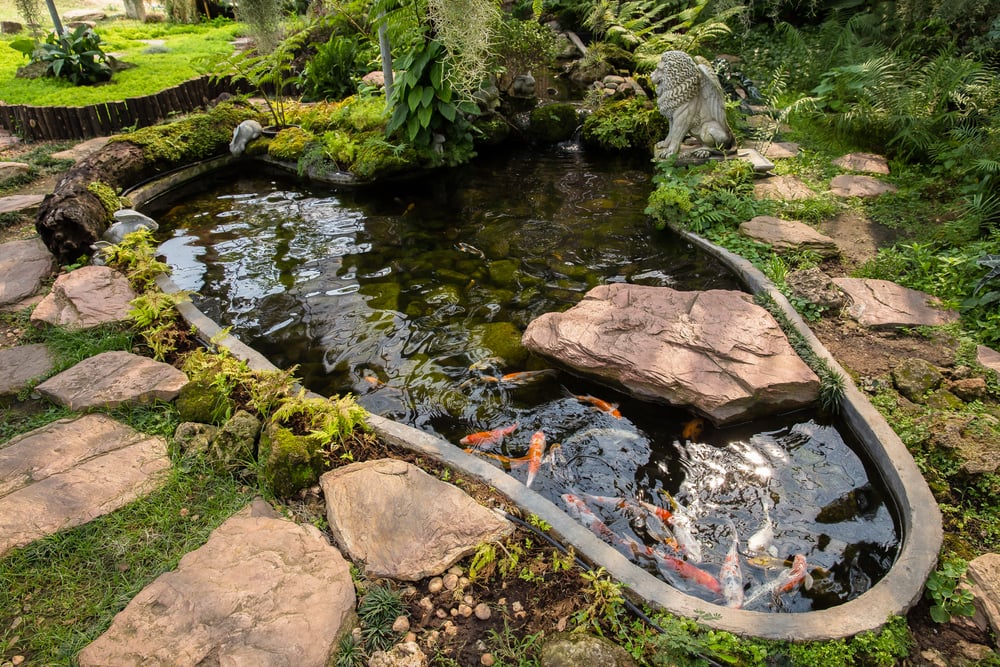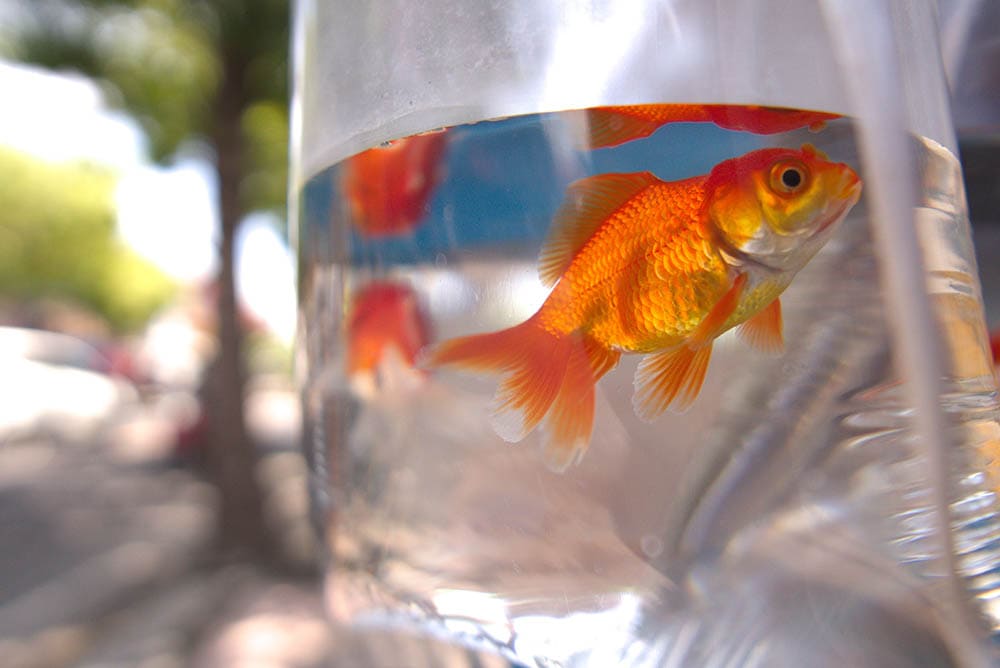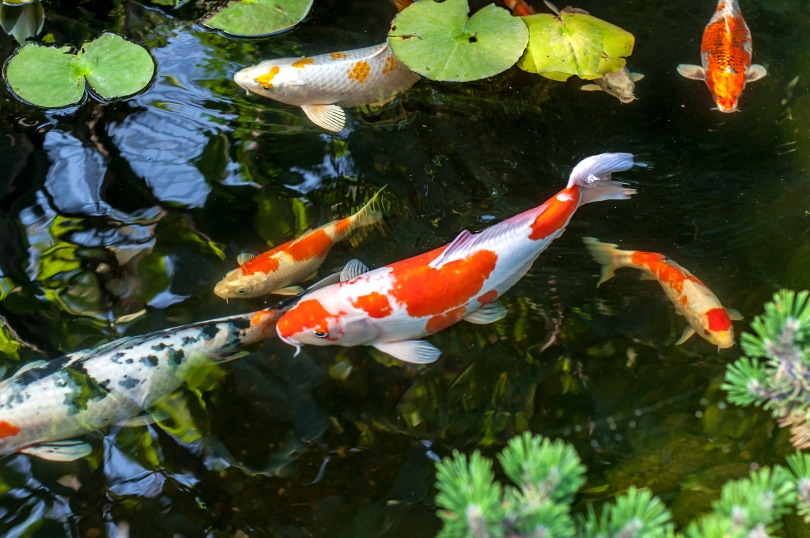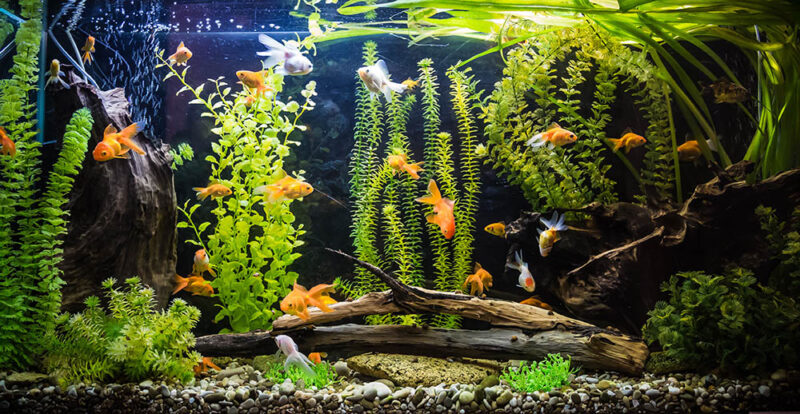
Click to Skip Ahead
There are over 1,300 species of Cichlids, and many of these species can be kept as aquarium pets. Some of the most popular pet Cichlids include the African and Convict Cichlids, the Discus and Oscar. Cichlids are freshwater fish that can vary in size depending on the species.
They are known for their assertive, often aggressive, temperaments and bright colors, which make them fascinating freshwater fish. With such a diverse number of Cichlids being kept in captivity, they usually have different breeding habits that vary according to their species. This article will provide you with tips and tricks to successfully breed these fish in captivity.
About Cichlid Breeding
Cichlids can either be mouth brooders or substrate spawners, which are two main ways that these fish reproduce. Unlike many other fish, certain species of Cichlid care for their young and play a role in their offspring’s protection and development.
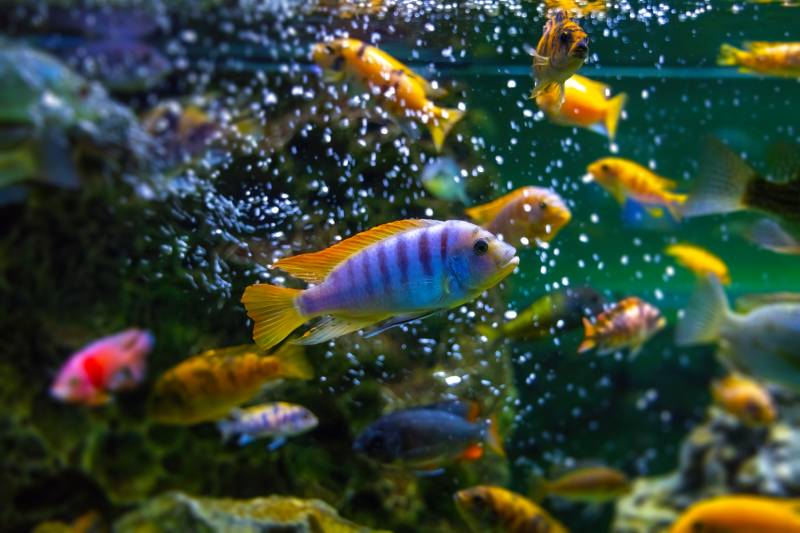
Mouth Brooders
Mouth-brooding Cichlids instinctively care for and protect their eggs and young by holding their eggs and fry in their mouths. The female Cichlid will release eggs that are then fertilized by a male. Once the eggs are fertilized, the female Cichlid will incubate the eggs in her mouth (also known as the buccal cavity). The wrigglers (non-free-swimming young) may stay in the female’s mouth for a few days after hatching and rely on her for protection. Mouthbrooding Cichlids usually form close pair bonds, while substrate spawners do not.
Both African and South American Cichlids can be mouth brooders, such as the Yellow Labs, Red Zebra, and Peacock Cichlids.
Substrate spawners
Cichlids that are substrate spawners will lay eggs along surfaces like caves, gravel, leaves, sands, and even rock formations. Both the male and female Cichlids will protect the eggs by keeping the water oxygenated and chasing away other fish. The males will usually become highly territorial and defend the eggs from potential harm, while the female spends most of her time caring for the eggs and fry.
Some examples of substrate-spawning Cichlids include Rainbow, Jack Dempsey, and Convict Cichlids.
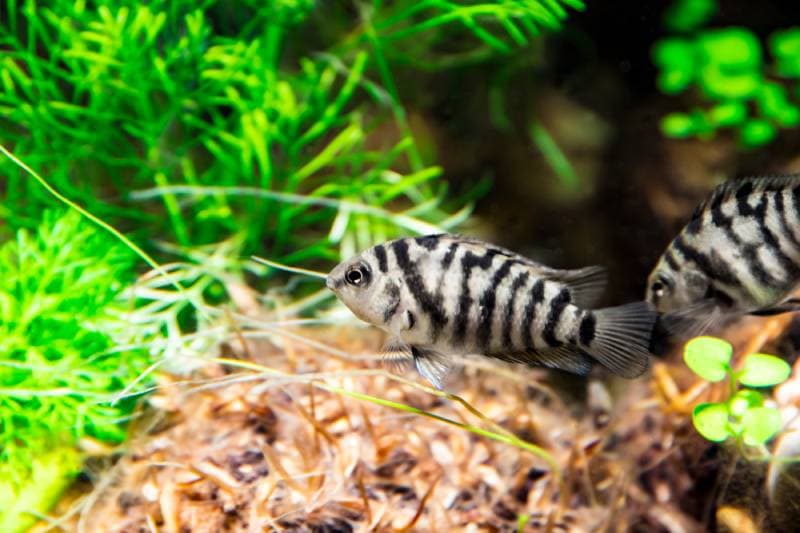
Reproduction
Cichlids spawn to reproduce via external fertilization. This means that the female Cichlid will lay eggs that the male fertilizes with milt (fish semen). A male and female Cichlid usually pair for spawning for monogamous mouthbrooding or substrate spawning. However, certain species have male Cichlids that will have multiple female partners at a time.
Although it is rare for a female Cichlid to have multiple male partners, it isn’t unheard of.
The 6 Tips & Tricks on Breeding Cichlids
Below are six tips you can use to begin breeding your Cichlids.
1. Ensure That the Environment is Ideal
Cichlids need an ideal environment to reproduce successfully. They require a spacious tank with good water quality. Your Cichlids are unlikely to breed if they are cramped in a small aquarium and are stressed from poor water quality.
Most species of Cichlid respond well to slight changes in the environment to encourage spawning. You can adjust the temperature to either slightly lower or higher than normal over a few days. A gradual change in the water pH, usually dropping it subtly lower than usual can induce spawning behavior. However, any pH changes should be done with caution as it can be stressful for Cichlids.
It is highly recommended to do 20% to 50% water changes every few days to provide your Cichlids with good water quality for breeding.
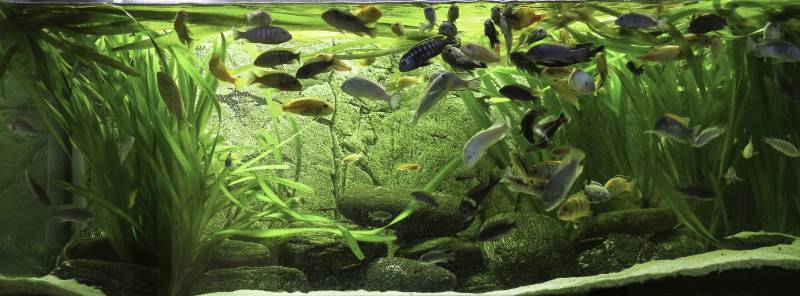
2. Keep Compatible Male and Female Cichlids to Encourage Spawning
Putting a male and female Cichlid together doesn’t mean that they are going to spawn. Some Cichlids need to be conditioned and form a bond with one another, otherwise, they may become aggressive or territorial.
You can try keeping around six juvenile Cichlids together and allowing them to pair for breeding when the environment is ideal. You can either house an equal number of male and female Cichlids together, or a higher number of females than males. However, you shouldn’t keep male and female Cichlids together long-term due to their aggressive temperaments. Watch for spawning behavior like chasing, courtship rituals, and nesting behavior to determine whether your Cichlids are ready to reproduce.
3. Make Necessary Diet Changes
Cichlids need to be conditioned for breeding, which includes making necessary dietary changes. Certain mouthbrooding female Cichlids will stop eating when they are carrying eggs in their mouths. This means it is important to ensure that they are fed nutritious foods leading up to spawning. Adding more protein into their diets is a great way to keep them well-fed and healthy for breeding. Some protein-rich foods include live or frozen brine shrimp, larvae, and worms.
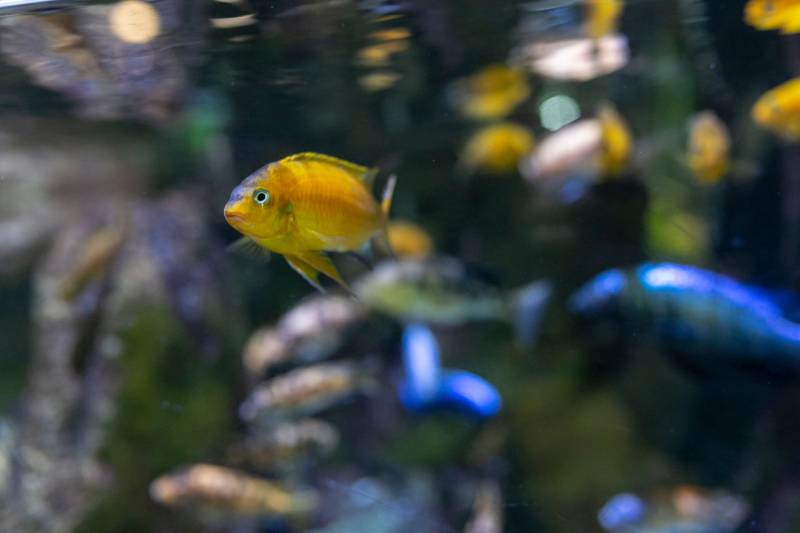
4. Do Not Disturb the Nesting Site
Both mouthbrooding and substrate-spawning Cichlids can get stressed if you keep disturbing their breeding ground and incubating females. Mouthbrooding female Cichlids may spit or eat their eggs if they are feeling stressed, leading to unsuccessful spawning. It’s best to monitor their breeding grounds from a distance without interfering too much. If they have dug around in the substrate or uprooted plants, avoid fixing it and risking disturbing them during this time.
5. Create a Breeding Tank
A separate breeding tank is beneficial if your Cichlids are kept in a communal aquarium, where the fry or eggs are at risk of being eaten by other fish.The breeding tank should have a filter and heater, along with good water quality. Most Cichlid breeding tanks for substrate spawning will contain netting, rock formations, or a deep layer of gravel for spawning.
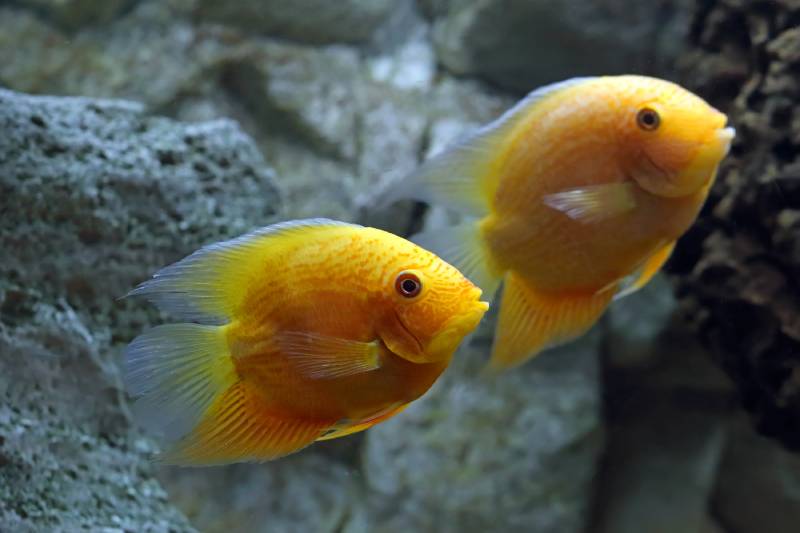
6. Remove the Male If Necessary
In species where the male is not involved in protecting the eggs or fry, it may be a good idea to remove him from the breeding tank once his role has been completed. Although it’s uncommon for Cichlids to eat their eggs and fry, some species may do this. Some breeders prefer to remove any incubating females to place them in a breeding tank to protect them from aggressive males.
African Cichlid Breeding
The majority of African Cichlids are maternal mouthbrooders. The female takes on more of the care roles, while the male protects the territory. Most African Cichlids are ready to reproduce at nearly a year old and will form either monogamous or polyamorous pairs and groups.
Experienced Cichlid keepers may find that African Cichlids are easy to breed and typically breed prolifically in the right environmental conditions. You can encourage African Cichlids to breed by maintaining good water quality, running a filter on the tank, and making subtle changes to the water chemistry.
Since African Cichlids shouldn’t be housed in opposite-sex groups, you should only introduce males for breeding, unless you have a very spacious aquarium, with room for different groupings of fish. You want to aim for around five female African Cichlids for every male in the group. Always monitor for signs of stress or aggressiveness during the pairing and remove the fish if necessary. A common behavior you may notice in groups with more males than females is increased aggression and fighting. The males will try to be the most dominant and colorful to attract the female for mating purposes.
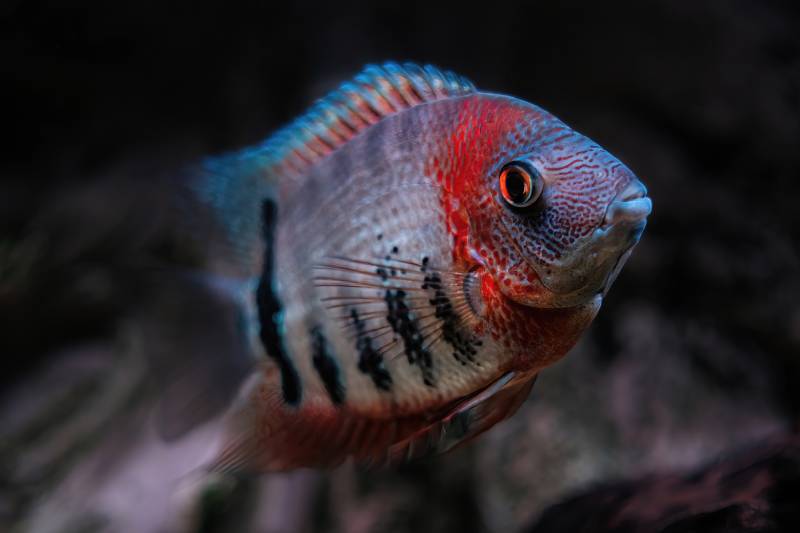
Male vs Female
African Cichlids are sexually dimorphic, so males are generally more colorful than females. You can also determine between males and females by looking at their fins. The ending points of male African Cichlids’ fins are more defined than females. Another way to determine the sex of African Cichlids is by looking at the vent. Females will have two different-sized holes that are closer together, whereas males will have two identical holes. You can vent African Cichlids when the fish are around 4 inches in size.
Caring for Cichlid Fry
Cichlid eggs typically take between 10 to 15 days to hatch from fertilization. If the species of Cichlid you breed to care for the young, there isn’t much you need to do besides provide them with food. The parents are well adapted to providing for their offspring.
Cichlid fry can eat baby brine shrimp, powdered fish food, and even spirulina for omnivorous species. Unless the fry is being raised in a separate tank, you can offer netting, plants, and moss to create a hiding space for the vulnerable fry.
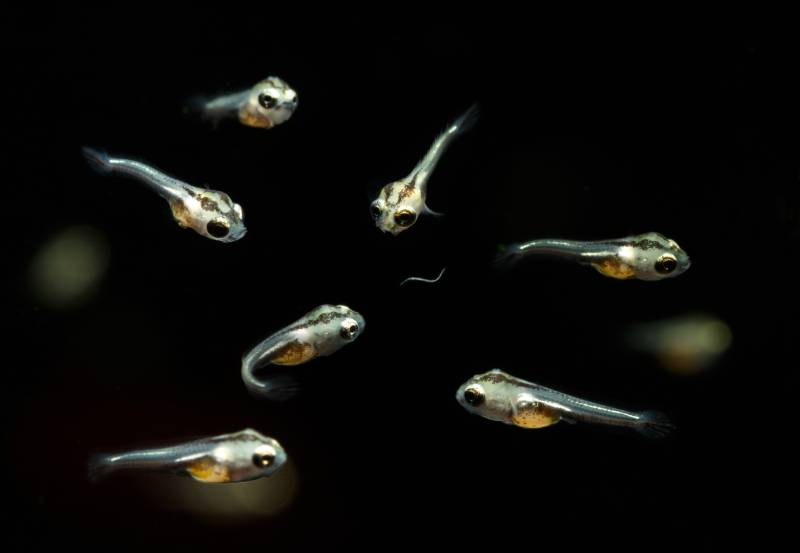
Conclusion
Breeding Cichlids can be a rewarding yet equally challenging experience that requires time and patience. It’s important to carefully research the species of Cichlid you plan to breed to ensure that the process can go as smoothly as possible. You will also need to make plans on what you will do with the fry since most Cichlids cannot be housed together in large groups.
See also:
Featured Image Credit: Arunee Rodloy, Shutterstock




